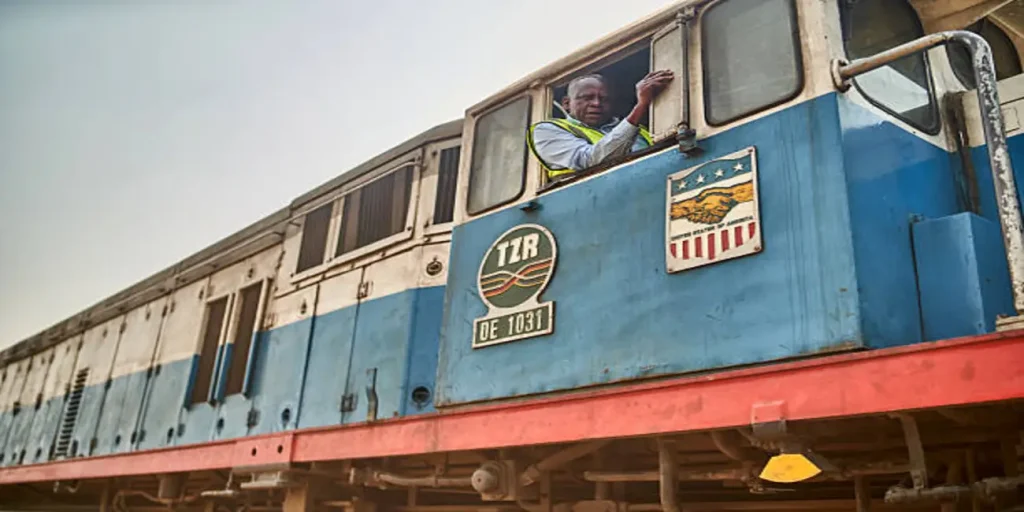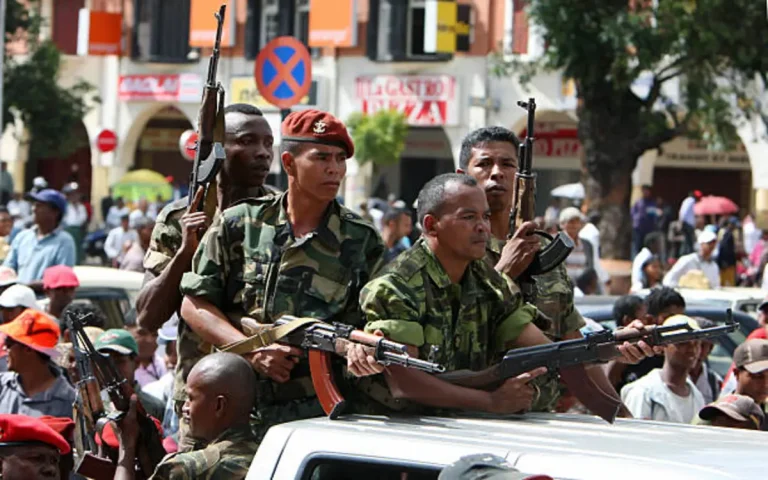
A TAZARA locomotive driver operates in Kapiri Mposhi, Zambia, amid China’s Belt and Road-backed African infrastructure expansion. Zinyange Auntony/Bloomberg via Getty Images
The deal was announced in Lusaka, where officials said the project will cover track rehabilitation, acquisition of locomotives, new passenger coaches, and freight wagons.
TAZARA railway agreement and regional importance
Zambia’s Ministry of Transport described the agreement as a strategic investment aimed at improving mineral exports from Central and Southern Africa.
The TAZARA railway, originally completed in the 1970s, links Zambia’s copper belt to the port of Dar es Salaam in Tanzania.
Officials noted the upgrade will strengthen Zambia’s position as a key copper exporter to global markets.
According to Zambia’s government, the new investment reflects China’s continued engagement in African infrastructure development.
Last year, China signed a preliminary agreement with Zambia and Tanzania to revive the line, setting the stage for the new financing deal.
China’s role in African infrastructure
Chinese authorities have promoted the TAZARA project as part of long-term cooperation under Beijing’s
Belt and Road Initiative.
The Chinese embassy in Lusaka said the rehabilitation will create jobs, expand trade corridors, and boost regional economic integration.
The railway, often described as a landmark symbol of China-Africa friendship, has been struggling with aging infrastructure and declining efficiency.
The new investment will also include training for railway staff in both Zambia and Tanzania, according to officials.
China has previously invested heavily in African transport networks, including highways, ports, and railways.
Competition with alternative transport corridors
Analysts noted that the TAZARA modernization comes as the United States and its partners back the
Lobito Corridor, a transport initiative linking the Angolan coast with copper and cobalt mines in Zambia and the Democratic Republic of Congo.
The Lobito Corridor is being developed with financial and technical support from Washington, Brussels, and private sector partners.
Observers say both projects underline global competition over access to Africa’s mineral wealth, especially copper and cobalt needed for renewable energy and electric vehicles.
Zambia’s government has said it welcomes both initiatives, arguing that multiple corridors will reduce logistical risks for exporters.
According to transport officials, the TAZARA rehabilitation is expected to ease congestion and delays that have plagued existing supply routes through South Africa.
Economic and logistical challenges
The TAZARA line has long been affected by underinvestment, deteriorating tracks, and outdated rolling stock.
Freight volumes have declined over the past decade, forcing mining companies to shift more exports onto road transport.
Logistics experts have warned that heavy truck traffic is damaging highways, raising costs, and reducing efficiency.
The rehabilitation project aims to restore TAZARA’s capacity to carry millions of tonnes of copper and cobalt annually.
Tanzania’s transport ministry said the project will also benefit its economy by strengthening Dar es Salaam’s role as a regional shipping hub.
Regional cooperation and future prospects
Zambian and Tanzanian officials stressed that the project represents a new phase of cooperation between the two countries and China.
In Lusaka, Transport Minister Frank Tayali said the deal was vital for “unlocking economic growth and enhancing trade competitiveness.”
Tanzania’s Transport Minister Makame Mbarawa described the rehabilitation as a “milestone in regional integration and connectivity.”
Both governments confirmed that joint management structures will be strengthened to oversee the modernization process.
The first phase of the project is expected to begin in early 2026, with work on key sections of the railway line.
TAZARA railway and Africa’s copper exports
Zambia is Africa’s second-largest copper producer after the Democratic Republic of Congo.
TAZARA provides an alternative export route that avoids congestion in South African ports, where logistical bottlenecks have disrupted shipments.
The modernization is expected to increase Zambia’s export volumes and improve delivery times for global buyers.
International commodity markets closely monitor developments in Zambia’s mining sector due to the strategic importance of copper in green technologies.
Related: Mauritius central bank governor agrees to resign after pressure from Prime Minister
Analysts say the deal signals China’s determination to secure long-term access to Africa’s mineral supply chains.

